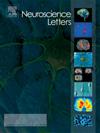人类颅骨间充质干细胞的重复移植改善了脊髓损伤大鼠模型的电生理恢复。
IF 2.5
4区 医学
Q3 NEUROSCIENCES
引用次数: 0
摘要
基于间充质干细胞(MSC)的疗法已被应用于脊髓损伤(SCI)的多项临床试验中。我们成功地从人类颅骨中提取了间充质干细胞,并开发出一种啮齿类动物纵向神经监测技术。除单次移植外,多次移植也被认为是一种新的治疗策略。然而,目前还没有利用经颅电刺激运动诱发电位(tcMEPs)研究多次间充质干细胞移植对 SCI 的电生理效应的报道。在此,我们旨在利用tcMEPs阐明多次间充质干细胞移植的疗效和作用机制。在建立了体重下降诱导的 SCI 大鼠模型后,我们在 SCI 后的第 1 天和第 3 天反复进行了人颅骨间充质干细胞(hcMSCs)的静脉移植。移植后 6 周评估运动功能和 tcMEP 恢复情况。用免疫染色法检测损伤后脊髓的髓鞘和神经元,评估脊髓损伤后的组织修复情况。与单次移植和对照治疗相比,重复移植hcMSC能明显改善运动功能和电生理恢复。重复移植hcMSC对锥体束轴突的功能结构具有保护作用,从而促进了电生理功能的恢复。因此,急性期重复移植可能是间充质干细胞临床应用于 SCI 的一种新颖而有效的治疗策略。本文章由计算机程序翻译,如有差异,请以英文原文为准。
Repeated human cranial bone-derived mesenchymal stem cell transplantation improved electrophysiological recovery in a spinal cord injury rat model
Mesenchymal stem cell (MSC)-based therapy has been applied in several clinical trials of spinal cord injury (SCI). We have successfully established MSCs from human cranial bone and developed a longitudinal neuromonitoring technique for rodents. In addition to single transplantation, the potential of multiple transplantations has been suggested as a new therapeutic strategy. However, there are no reports on the electrophysiological effects of multiple MSC transplantations in SCI using transcranial electrical stimulation motor-evoked potentials (tcMEPs). Here, we aimed to elucidate the efficacy and mechanism of action of multiple MSC transplantations using tcMEPs. After establishing a weight-drop-induced SCI rat model, we performed repeated intravenous transplantation of human cranial bone-derived MSCs (hcMSCs) on days 1 and 3 post-SCI. Motor function and tcMEP recovery were evaluated 6 weeks post-transplantation. Tissue repair post-SCI was assessed using immunostaining for myelin and neurons in the injured posterior cord. Repeated hcMSC transplantation significantly improved motor function and electrophysiological recovery compared to single transplantation and control treatment. Repeated hcMSC transplantation promoted electrophysiological functional recovery by exerting a protective effect on the functional structure of pyramidal tract axons. Thus, acute-phase repeated transplantation could be a novel and effective therapeutic strategy for the clinical application of MSCs in SCI.
求助全文
通过发布文献求助,成功后即可免费获取论文全文。
去求助
来源期刊

Neuroscience Letters
医学-神经科学
CiteScore
5.20
自引率
0.00%
发文量
408
审稿时长
50 days
期刊介绍:
Neuroscience Letters is devoted to the rapid publication of short, high-quality papers of interest to the broad community of neuroscientists. Only papers which will make a significant addition to the literature in the field will be published. Papers in all areas of neuroscience - molecular, cellular, developmental, systems, behavioral and cognitive, as well as computational - will be considered for publication. Submission of laboratory investigations that shed light on disease mechanisms is encouraged. Special Issues, edited by Guest Editors to cover new and rapidly-moving areas, will include invited mini-reviews. Occasional mini-reviews in especially timely areas will be considered for publication, without invitation, outside of Special Issues; these un-solicited mini-reviews can be submitted without invitation but must be of very high quality. Clinical studies will also be published if they provide new information about organization or actions of the nervous system, or provide new insights into the neurobiology of disease. NSL does not publish case reports.
 求助内容:
求助内容: 应助结果提醒方式:
应助结果提醒方式:


